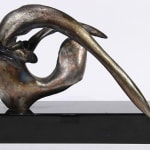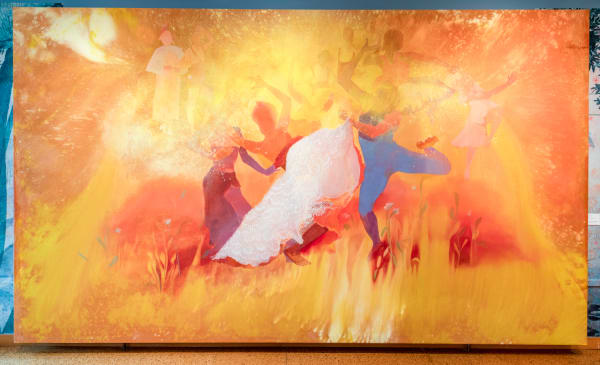Richard Hunt USA, b. 1935
Untitled, 1967
Welded reclaimed automotive steel
9 1/4 x 14 3/4 x 8 1/2 in
23.5 x 37.5 x 21.6 cm
23.5 x 37.5 x 21.6 cm
7013
ARCHIVE WORKS - Kavi Gupta Collection
Further images
-
(View a larger image of thumbnail 1
)

-
(View a larger image of thumbnail 2
)

-
(View a larger image of thumbnail 3
)

-
(View a larger image of thumbnail 4
)

-
(View a larger image of thumbnail 5
)

-
(View a larger image of thumbnail 6
)

-
(View a larger image of thumbnail 7
)

-
(View a larger image of thumbnail 8
)

-
(View a larger image of thumbnail 9
)

-
(View a larger image of thumbnail 10
)

-
(View a larger image of thumbnail 11
)

-
(View a larger image of thumbnail 12
)

-
(View a larger image of thumbnail 13
)

-

This historic sculpture by Richard Hunt embodies the artist’s signature ability to manifest natural, organic forms using the cast-off scraps of the industrial age. In it’s graceful form, we see...
This historic sculpture by Richard Hunt embodies the artist’s signature ability to manifest natural, organic forms using the cast-off scraps of the industrial age. In it’s graceful form, we see reclaimed automotive steel transformed into something akin to a skeleton, a shell, or a seed husk, or even an expression of the Golden Mean. Made in 1967, it is an elegant example of Hunt’s lifelong interest in automotive scrap as an aesthetic medium. Born near the infamous steel yards on the South Side of Chicago in 1935, Richard Hunt was delivered into a world of metal. As a young artist studying at the School of the Art Institute of Chicago in the 1950s, he perceived a Surrealist dreamworld lurking in the junkyards of Midwestern America. The cast-off, metal skeletons of the Steel Age—even then beginning to corrode in heaps across the rust belt—became lifelike abstractions in his hands, perfectly expressing the beauty and terror of a rapidly changing, mid-20th Century American Dream.
Provenance
Artist Studio
Private Collection
Kavi Gupta
Share
- X
- Tumblr





















